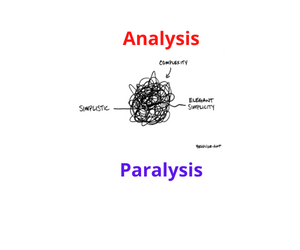This first post of 2018 focuses on a very current topic: CBDM or Central Bank Digital Money. This would be the “the digital pound in your digital wallet” that has the same properties as the “the pound in your pocket”. Exactly the same; universal acceptance, store of value.
In the last post of 2017, I mentioned that the Fed said it was looking at Crypto currency. In the closing weeks of last year, the Danish Central Bank published a really detailed and well presented report on CBDM. Not needed, was the conclusion.
“The potential benefits of introducing central bank digital currency for households and businesses in Denmark would not match the considerable challenges which this introduction would present. Danmarks Nationalbank therefore has no plans to issue central bank digital currency.”
And they have a very strong case for being right. Well, in the particular cases they mention. I have no detailed knowledge of the Danish payments, yet as I read the report, my impression was that those local systems are as well developed as those in Switzerland which I do know well.
My home country has really efficient and effective “rails” (sic); the infrastructure platforms for securities trading, securities settlement, liquidity management via Repo and payments are individually superb and interact in a very efficient and effective way. I do not think it is a stretch to say that any digital infrastructure and use of the Blockchain would be hard pressed to offer a better, faster or cheaper service to the mass of local Swiss businesses and individuals.
So, is all this noise about digital and Blockchain just that; noise? Simple answer: no, not at all. For institutional businesses, there are substantial inefficiencies which translate to higher costs and lower returns. That impact ultimately affects the ordinary person in the high street.
The area of Liquidity is a good place to start. Since the Lehman collapse, regulators have focussed on ensuring banks have enough liquid assets on hand to withstand sudden and, or substantial cash outflows. So called Stress Tests figure in the mix to ensure banks can survive in extreme situations. The central bankers club in Basel even tightened the screws with BCBS 248, dictating some very precise reporting and operational capabilities for intraday liquidity. The result of this is that the banks have to have huge liquidity buffers; a Tier I bank may have as much as $100B in liquid assets with some 10 to 15% of that supporting intraday. Why?
A substantial driver of the size of these buffers is the value of the payments that need to be made to support institutional business. Everyday, on behalf of its institutional clients, Citibank will pay lots of Euros to Deutsche Bank and lots of Euros will move the other way. The liquidity rules require that both banks have reserves and on top of that, if those institutional clients are banks or brokers, they too have to have reserves.
To illustrate; Credit Suisse uses Deutsche Bank as its EUR Nostro. so in the first instance, the rules force Deutsche to have reserves to support its clients, which include CS. On top of that, the Swiss rules force CS to have reserves to cover those EUR flows. At Deutsche, the costs of that liquidity will find their way to the Global Transaction Bank and, if behaviour is rational, those costs get passed on the GTB clients. CS will have to absorb those costs and the costs allocated internally by its Treasury.
Those costs will be passed on to customers; institutional ones and any domestic individual or business clients involved in cross-border business.
There are even costs when nothing really happens. In the securities world, asset servicing is about all the things that need to be done even if you are not being and selling: dividends, coupons, withholding tax, reclaims, rights issues and so on. The list is quite extensive and results in so called custody fees that are not totally insignificant. Again, the impact of this on domestic individuals and businesses is somewhat limited and affects institutional businesses far more. My Swiss company uses AXA-Winterthur for its pension fund. The cost of all that asset servicing translates to custody fees charged to AXA, which directly affect the return to the pension fund of my small business and may others in Switzerland.
There is a very good chance that the use of Blockchain, or more precisely DLT, Distributed Ledger Technology, could have a massive impact on the efficiency and cost of securities settlement and asset servicing. For more on this, Google Peter Randall and SETL; the very able team whom I have mentioned. But, and it is a big one, the securities process is a two sided thing; it needs money. Simply put, if you can only put the asset on DLT and not the money side, the potential is limited.
On the “money side”, banks such as Credit Suisse would have a new choice if there were CBDM that was connected in one international system. For example, they could “self clear” EUR, which might end up cheaper than using the services of Deutsche Bank. And, the CBDM could power new ways of settling and asset servicing securities.
On top of that, if as a whole, the banks could make the new digital infrastructure multi-currency and add a new process that avoided all the gross payments and accompanying intra-day overdrafts, then I would like to think that the size of liquidity buffers could come down substantially.
Lessons to be Learned
So, if want a shot at making institutional business more efficient and with that less costly, then I think there is a need for CBDM, which is exactly what those nice people in Denmark just said they see no reason to offer.
Fortunately, there is more one opinion. Elsewhere, Singapore is getting there with its project UBIN.
As I have mentioned before, the banks are trying to fill this void; UBS is leading a consortium developing a Universal Settlement Coin. That effort is targeted firmly at institutional business. It would offer a “digital pound in a digital wallet”, backed by offsetting deposits with a central bank.
From experience, I know that it takes time and patience and a whole lot of money to build shared banking infrastructure. Together the industry has achieved great things; banking without SWIFT is as unimaginable as FX without CLS. The former started in 1973, the latter in 2002; I hope that a variation on Moore’s Law applies and it will be 15 or so rather than 29 years before we have a global CBDM and a DLT based solution for institutional business.
About the Author: The Bankers’ Plumber. I help banks and FinTechs master their processing; optimising control, capacity and cost.
If it exists and is not working, I analyse it, design optimised processes and guide the work to get to optimal. If there is a new product or business, I work to identify the target operating model and design the business architecture to deliver those optimal processes and the customer experience.
I am an expert-generalist in FS matters. I understand the full front-to-back and end-to-end impact of what we do in banks. That allows me to build the best processes for my clients; ones that deliver on the three key dimensions of Operations: control, capacity and cost.
Previous Posts
Are available on the 3C Advisory website, click here.
Publications
The Bankers’ Plumber’s Handbook
Control in banks. How to do operations properly.
For some in the FS world, it is too late. For most, understanding how to make things work properly is a good investment of their time.
My book tries to make it easy for you and includes a collection of real life, true stories from 30 years of adventures in banking around the world. True tales of Goldman Sachs and collecting money from the mob, losing $2m of the partners’ money and still keeping my job and keeping an eye on traders with evil intentions.
 So you might like the tool kit, you might like the stories or you might only like the glossary, which one of my friends kindly said was worth the price of the book on its own. Or, you might like all of it.
So you might like the tool kit, you might like the stories or you might only like the glossary, which one of my friends kindly said was worth the price of the book on its own. Or, you might like all of it.
Go ahead, get your copy!
Hard Copy via Create Space: Click here
Kindle version and hard copy via Amazon: Click here
Cash & Liquidity Management
An up to date view of the latest issues and how BCBS guidance that came into force from Jan 1 2015 will affect this area of banking. Kindle and hard copy.
Hard Copy via Create Space: Click here
Amazon UK: Click here
Amazon US: Click Here
Share on:



